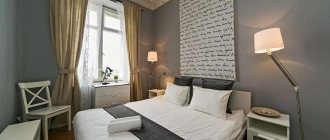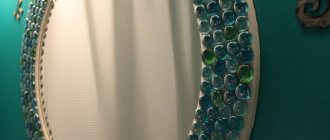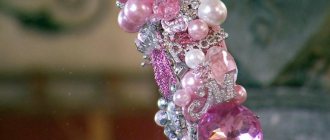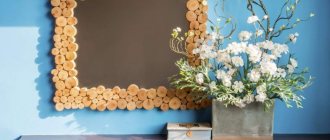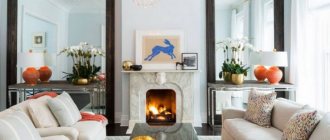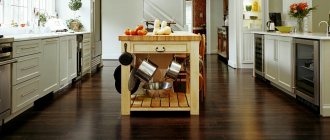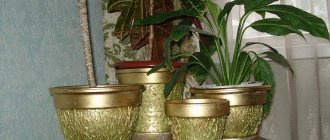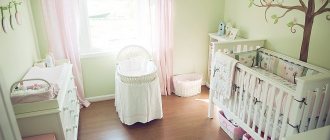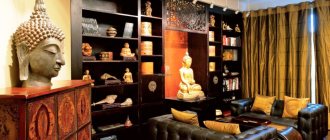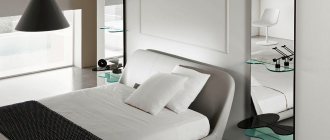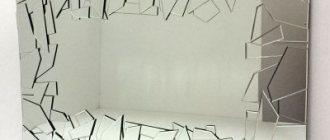Home » Decor » Accessories
AccessoriesDesign
Alyona
11639 Views
A mirror in an apartment expands the space, transforms rooms, and allows you to realize your wildest fantasies. The mirror becomes the final detail when creating an interior. If it is installed incorrectly, then the surface will narrow the corridors and cause discomfort for the owners.
Decorate the walls with bronze panels
The high plasticity of bronze allows you to make three-dimensional panels of any complexity and decorate walls with them. And decorators take full advantage of this. The style of wall decor varies from abstract forms to strict classical lines and vintage paraphernalia. Sometimes a bronze panel is given the functions of a sconce.
Photo: renoguide.com.au
Photo: lushome.com
Photo: jerusalemhouseministries.net
Frames for designer mirrors: types, materials, features
Frames are responsible for the aesthetic appeal of interior items. Materials for decorative edging of mirrors:
- Tree. One of the most original materials for decorating accessories. Most often, such frames are covered with gold or artificially aged.
- Metal. A massive noble frame looks pompous and pretentious, so it is not suitable for modern styles. Forged mirror frames are a successful attribute of the early movements of classicism.
- Gypsum. Mirrors in plaster frames are an element of classic style. They look best in the living room above the sofa or on a spare wall in the bedroom.
- Plastic. The material is suitable for framing small accessories. It can be painted in any color and turned into a designer decoration.
And even the simplest frame can be transformed by covering it with leather or thin rope. Designers create unique attributes from unexpected materials. Such products look luxurious in any room decorated in a modern style.
Frameless mirrors look impressive in styles such as techno and loft. Accessories emphasize the minimalist design and visually expand the space.
Mirrors in black frames in the bedroom
Mirror composition in a frame in the living room interior
Visual expansion of the hallway
The first room in the house is the hallway, which has a very small area. Sometimes nothing else fits in it except a wall hanger. But even in the most disadvantaged version, you can always visually adjust the area. A mirror in the hallway is an essential attribute. In addition to its intended use, it can be used to easily move walls apart.
Photo: Alexey Trofimov
For example, a door with a mirror is an effective tool for this. This method is suitable if the hallway is not elongated and does not smoothly transition into a long corridor.
A wardrobe in the hallway with a tall mirror will not only help you dress up before going out, but also visually improve the interior. Even an ordinary wall mirror in a modern hallway interior will adjust its area.
How not to position a mirror - 5 main mistakes
Let's start with what not to do. Such errors lead to the fact that the desired effect cannot be achieved. ↓
- Don't hang mirrors opposite each other. It's not just a matter of mysticism. There is no need for a “mirror corridor” in an apartment - not only will you not expand the space, but, on the contrary, you will make it narrower.
- Do not leave gaps between mirrors if you are hanging several of them in a row. It is better to glue the mirrors to the wall end-to-end. A solid mirror strip will look more impressive and will work to visually expand the room. This technique is most suitable for the bathroom.
- Do not place mirrors in front of the front door or windows. This rule is true for those who believe in Feng Shui. It is believed that this will release your luck from your home.
- Don't use too many mirror surfaces. Yes, you will get reflective light, glare, space and volume. But at the same time - a “cold” room.
- Do not hang a full-length mirror on the end wall of a long narrow corridor. Otherwise, the corridor will visually seem too narrow and long.
But installing a mirror in the floor on a long wall is indeed a working technique in order to visually enlarge the space and give it volume.
Advice! Invite professionals if you need to hang or glue a voluminous heavy mirror. And not only so that it hangs exactly straight. And more for safety reasons.
Another general rule, valid for all rooms in the apartment, is that the center of the mirror should be at eye level of a standing person.
Refer to this diagram to choose the correct height for the mirror
Historical reference
The first archaeological finds of similar mirrors date back to the Bronze Age. Then they were made of tin, gold or platinum, so they were a luxury item available only to very wealthy people. In the modern understanding, humanity learned about a mirror - the way we are used to seeing it - in the 13th century, when Europe learned how to blow glass. Over such a long period of existence, the mirror has acquired many myths and superstitions.
The ancient Greeks believed that Aphrodite emerged from the foam of the sea off the coast of Cyprus. The traditional attribute of this goddess is a mirror. It was in Ancient Greece that a large deposit of copper was discovered, Cyprus became the “copper” center of the entire Mediterranean, and mirrors were made from this metal at that time. This is how an image appeared called the “Mirror of Venus” (Aphrodite), understood throughout the world and denoting the female gender, the chemical element copper and the planet Venus.
In many cultures, the mirror has become an integral attribute of characters associated with beauty and mystical power.
Install bronze furniture
Bronze furniture, like forged furniture, is not as rare as it might seem at first glance. Most often it is made of dark bronze, and these are chairs, armchairs, headboards of beds and benches, table legs. Bronze is often combined with other materials, such as glass and natural stone. A rare option is bronze cabinet fronts. But very effective.
Photo: apartmenttherapy.com
Photo: aisyahome.com
Photo: homedesignersuite.co
Decorative mirrors in the interior: rules for selection and placement
When purchasing an accessory, it is important to pay attention to the integrity of the surface. Even minimal scratches and chips are unacceptable. The frame should be free of stains, scuffs and dents.
If mirrors for the interior have already been selected, it’s time to think about the principles of their arrangement. There are four basic rules:
- Placing mirrors parallel to each other in narrow corridors is prohibited. This arrangement causes negative associations and adversely affects the mental state of the room's inhabitants.
- You should not place attributes in places exposed to direct sunlight. Aggressive streams of light affect the condition of the mirror surface - making it cloudy and dull.
- Massive specimens are best placed on a free wall. Next to large interior items they look aggressive. It creates a feeling of clutter and excessive volume.
- Make sure that the mirror does not reflect defective sections of the walls, bulky objects, or unsuccessful interior details. Even if they are not very noticeable, then in the reflection the gaze will definitely catch them.
Large mirrors usually have a more modest, discreet frame than miniature ones. But one such detail is enough to create a unique atmosphere in the room. Designers recommend placing such attributes at a height of at least 30 cm from the floor.
Mirror surface as a design element
This is interesting! There are several ancient beliefs associated with mirrors that say that accessories should not be placed in front of the bed. Designers try to follow this rule by placing elements in more favorable places.
Hang bronze curtain rods
Nowadays there is such an abundance of curtain rods that bronze ones are installed less and less often. They are inferior to aluminum, wood, and especially plastic ones in terms of heaviness and high price. And yet they are beautiful, strong, durable.
Photo: textile-home.com
Photo: blind-perfection.co.uk
Mirror magic: product variations and their features
Accessories are classified as functional and decorative. Products from the first group serve as ideal assistants in daily self-care rituals. Typically, such specimens are located in the bathroom and hallway, on dressing tables.
Types of decorative interior mirrors:
- Artificially aged. Such products are often called patinated. A distinctive feature is spots and depressions on the surface that appear as a result of treatment with special compounds. Such accessories will decorate rooms in Provence, eclectic, and shabby chic styles.
- Faceted. Products with spectacular beveled edges. Beveled mirrors perfectly refract light rays and mysteriously shine with all shades of the rainbow. Models are good for modern, classic, neoclassical styles.
- Tinted. Such products are covered with a thin colored film that unobtrusively shimmers in different shades. Most often blue, yellow, pinkish. At the same time, the surface loses its reflective properties a little, but it looks great in luxurious interiors. Tinted attributes are suitable for both minimalist trends and pompous Art Deco, which “loves” pretentious original elements.
- Finishing reflective surfaces. This is an excellent option for decorating a large wall area. Diamond mirrors look elegant and interesting. In the classic style, surfaces with patterns or engravings are often found.
An interesting effect can be achieved by combining several types of models in the design of one room. The main thing is that the elements complement each other and match the design style.
A separate classification includes floor mirrors on a convenient stand. They are more functional products than decorative ones. This is an excellent option for arranging a home dressing room.
Decorative mirror in interior design
